- Hypogonadism - (https://www.nlm.nih.gov/medlineplus/ency/article/001195.htm)
- Peeyush Kumar, Nitish Kumar, Devedra Singh Thakur and Ajay Patidar "Male hypogonadism: Symptoms and treatment", Journal of Advanced Pharmaceutical technology and research, July 2010
- Prevalence, Diagnosis and Treatment of Hypogonadism in Primary Care Practice - (http://www.bumc.bu.edu/sexualmedicine/publications/prevalence-diagnosis-and-treatment-of-hypogonadism-in-primary-care-practice/)
- Male hypogonadism - (http://www.mayoclinic.org/diseases-conditions/male-hypogonadism/basics/definition/con-20014235)
What is Hypogonadism?
Hypogonadism also known as gonad deficiency is a condition with reduced or absence of sex hormone secretion by the sex glands. Sex glands also known as gonads are the testes in males and ovaries in females. Sex hormones play a crucial role in controlling the sex characteristics such as breast and testicle development, pubic hair growth.
When there is low serum testosterone in an adult, it is called andropause – and this is a separate condition and should not be confused with developmental hypogonadism.
Hypogonadism condition affects nearly 4 to 5 million males in America, though very few are actually treated for the condition. Hypogonadism affects sexual maturity of an individual and is, therefore crucial to identify the condition and to treat appropriately.
Hypogonadism may be present from birth or it may develop at a later stage due to injury or infection. Therefore, the effects of this condition depend on the stage of sexual maturity.
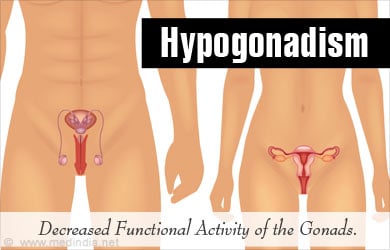
What is the Importance of Treating Hypogonadism?
Low sex hormone production results in the following:
- Lower quality of life
- Relationship problems
- Poor stamina
- Fatigue
- Anemia
It is imminent to treat this condition no matter how old the patient is, as most hypogonadism is treatable. The treatment depends on the stage of sexual maturity when hypogonadism sets in. Early diagnosis and treatment among children will allow normal sexual maturity.
What are the Causes of Hypogonadism?
Hypogonadism is classified into two types:
- Primary hypogonadism
- Central hypogonadism
Primary Hypogonadism: In this type of hypogonadism the ovaries or the testes do not function properly
- Genetic abnormality: A congenital abnormality arising from the existence of two or more X chromosomes as well as a Y chromosome (a normal male will have only one X and one Y chromosome) results in abnormal development of sexual characteristics. This leads to poor development of the testicles and underproduction of the hormone testosterone. This congenital abnormality is known as Klinefelter syndrome
- In women, the most common genetic disorder that leads to hypogonadism is Turner syndrome.
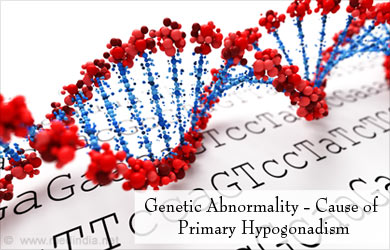
- Undescended testicles: During fetal growth, testicles of a male are present in the abdomen and it,slowly descend into the scrotum before birth. In extremely rare instances, the testicles may not descend and might do so within the first few years of birth. When this does not occur and the condition is not treated at an early stage, it could lead to impaired testicle function and low testosterone production.
- Trauma to the testicles: Injury or trauma caused to the testicles especially during sports activity has been found to impair testicular function and lead to hypogonadism.
- Cancer Treatment: Cancer treatment procedures like chemotherapy) and radiation lead to changes in the production of testosterone and sperms. In some patients, the process is reversed after treatment while in others it increases the chance of infertility To avoid this, many patients prefer to store their sperm before the start of the treatment. Cancer of the testis itself may mean removal of testis and if for some reason a person has only one testis, it would mean loss of all testicular function and hormones.
- Mumps orchitis: Mumps affects testis besides other glands and can lead to impaired testicle function and secretion of testosterone.
- Aging: Old age also leads to lower production of testosterone
Secondary Hypogonadism- The key areas in the brain that control sex glands (pituitary and hypothalamus) do not function properly and hence result in altered secretion of testosterone.
The causes of secondary hypogonadism include:
- Obesity: Significant weight gain can lead to hypogonadism
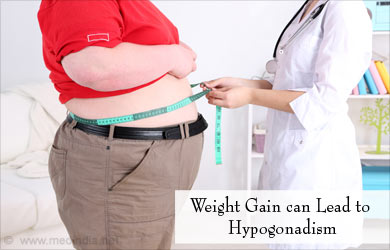
- Abnormality in the development of Hypothalamus: Hypothalamus is the part of the brain that controls the hormones secreted by the pituitary gland and any abnormality in hypothalamus development directly affects testosterone secretion. This condition is termed the Kallmann syndrome.
- Infections that cause inflammation: When the hypothalamus and the pituitary gland are affected by diseases like tuberculosis, histiocytosis or sarcoidosis, the secretion of testosterone is affected, leading to hypogonadism.
- Abnormalities in the pituitary gland: Any changes in the function of the pituitary gland affect the secretion of testosterone into the testicles. Such abnormalities could be developmental, trauma, tumor formation or even due to therapy for the tumor.
- AIDS: AIDS caused by HIV virus can affect the hypothalamus, pituitary gland as well as the testisresulting in hypogonadism.
- Stress: Stress is an important factor in developing secondary hypogonadism. Stress ay be due to:
- Work
- Relationship problems
- Excessive physical activity
- Extreme weight loss/weight gain
- Bereavement
- Drugs: The use of certain hormones or opiate drugs have been found to affect the levels of testosterone, resulting in hypogonadism.
- Surgery involving the sex glands: Any surgery on the sex glands can increase the risk of hypogonadism.
- Atrophy of the testis: Age or use of steroids can lead to atrophy of the testis that can result in hypogonadism
- Excess iron in the blood: Also known as hemochromatosis, this condition can lead to pituitary gland dysfunction or poor testicular function.
What are the Symptoms of Hypogonadism?
The symptoms of hypogonadism in female includes -
- Absence of menstrual cycle
- Hot flashes
- Body hair loss
- Poor development of breasts
- Milky discharge from breasts
- Poor libido
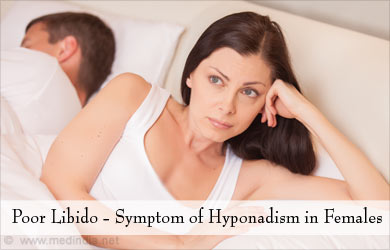
The symptoms of hypogonadism in male includes -
- Loss of Secondary sexual characteristics
- Chubby face and body structure
- Fat accumulation in the abdominal region
- Muscle wasting
There may be no obvious or minimum symptoms. The testosterone levels are lower than 300 ng/dL with a low bone density and low level of iron leading to anemia. There is also muscle wasting and low sperm counts (Oligospermia)
The symptoms in prepubertal male when the right treatment is not provided are:
- Delayed closure of epiphysis
- Sparse body hair
The post-pubertal symptoms are:
- Poor penile sensation
- Low libido
- Difficulty in reaching orgasm
- Poor quantity of ejaculate
- Erectile dysfunction
- Poor energy levels and stamina
- Anemia
- Osteoporosis
- Hot flashes
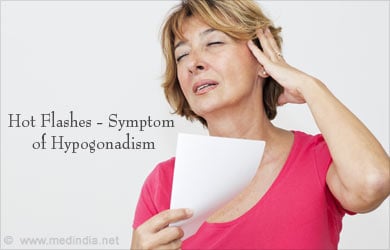
How to Diagnose Hypogonadism?
It is important to detect hypogonadism at an early stage so that appropriate treatment can be provided. This will help in the development of secondary sexual characteristics and a normal life for the individual.
The diagnosis is largely based on the symptoms exhibited by the individual and the levels of testosterone. Testosterone levels are determined by carrying out a blood test. As the levels of testosterone are highest in the morning, a blood sample is collected early in the morning.
ADAM (Androgen Deficiency in Aging Male) is a questionnaire with 10 pertinent questions that are used to diagnose hypogonadism. Based on the analysis of the questionnaire as well as the testosterone levels from the blood test, the reason behind hypogonadism- whether testicular, hypothalamus or pituitary is ascertained from the following tests.
- Biopsy of the testis
- Imaging of the pituitary gland
- Hormone testing
- Semen analysis
- Genetic testing
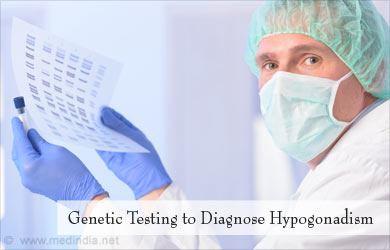
The levels of testosterone will continue to be monitored throughout the duration of the treatment to ensure that the treatment methods are aiding the patient.
In women, the levels of estrogen, follicle stimulating hormone (FSH) and luteinizing hormone (LH) are determined using blood test. Imaging tests like ultrasound are used to check for problems in the ovaries.
How do you Treat Hypogonadism?
Hormone replacement therapy (HRT) is the treatment of choice to increase levels of the sex hormone in males and females.
Testosterone replacement therapy (TRT) is carried out when the condition is caused due to testicular failure.
For boys TRT can stimulate puberty, increase muscle mass, promote facial hair growth.
Low dose testosterone can benefit women with decreased sex drive.
There are different methods of TRT administration, with the onus on what best suits the individual’s requirements.
Patch: Transdermal patches are easy to use and deliver the required amount of the hormones
Buccal tablets: These tablets should be placed in the buccal cavity which will allow slow release of the hormone to maintain optimum levels of the hormone.
Gel: Topical applications of the gel during the day will maintain normal cycles of the hormone, which is highest in the mornings, and ensure optimum concentrations.
Injections: Intramuscular injections suspended in oil prolong the period of absorption. The hormone levels reach a peak at about 72 hours after administering the injection. In women, injections are used to stimulate ovulation.
Implanted tablets: These tablets are surgically-placed and aid in improving hormone levels for up to 6 months.
Oral medications Oral testosterone tablets are taken orally and relatively inexpensive; but oral testosterone can cause a rise in cholesterol levels and increase in heart diseases. Therefore long term use of oral testosterone is not advised.
Prevention of Hypogonadism
Most of the causes of hypogonadism are genetic and cannot be prevented. However, maintaining a normal body weight and ensuring healthy eating habits will help lower the risk for hypogonadism due to obesity.
Health Tip
Zinc supplements are found to aid in treating hypogonadism.





